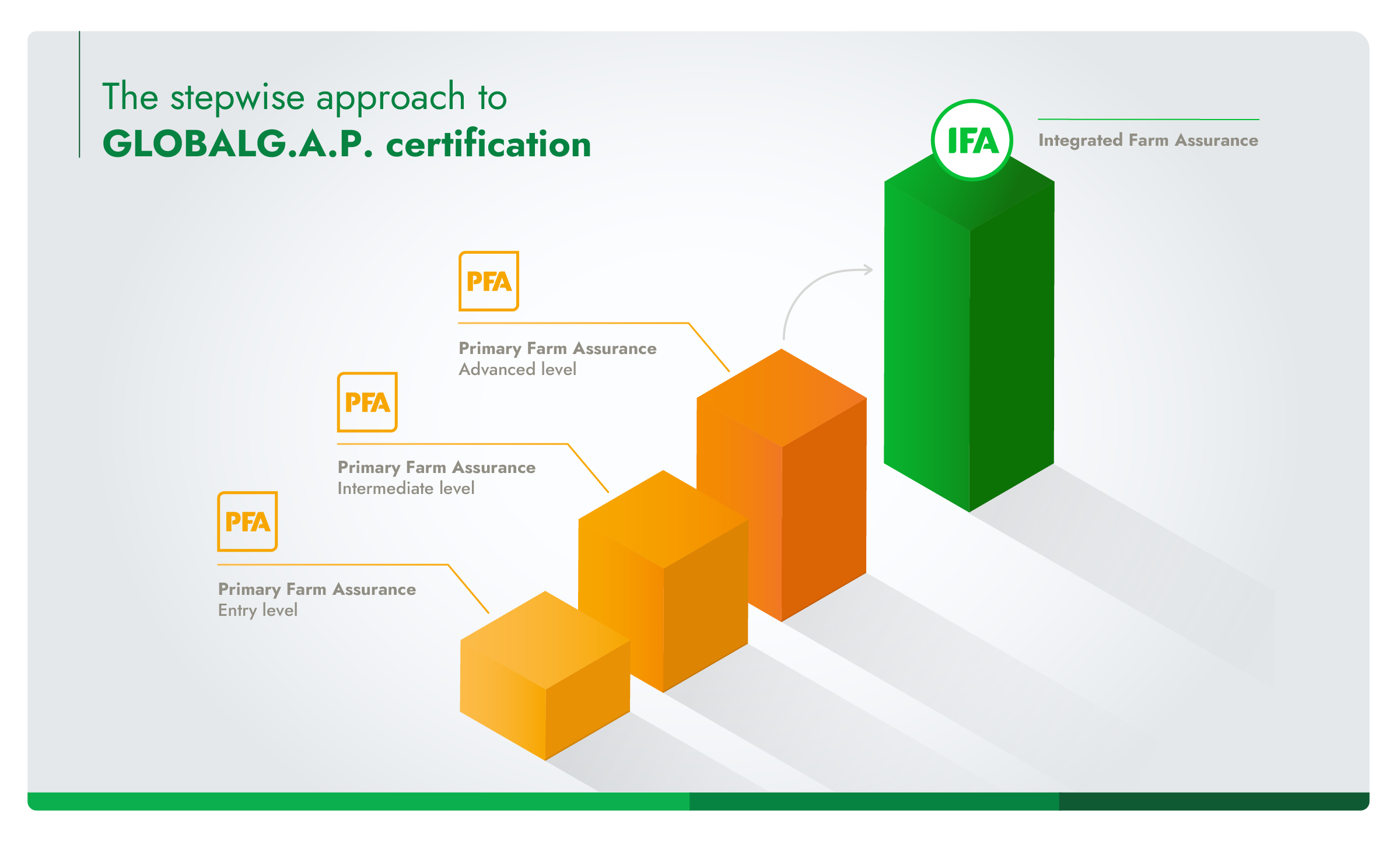26 September 2024
New version of Primary Farm Assurance published
The Primary Farm Assurance (PFA) program has been updated: Version 6 was published on 11 September 2024 and, following a six-month transition period, replaces v5 as of 1 March 2025. PFA is a key capacity-building program that facilitates the implementation of good agricultural practices among smallholders and producers in emerging markets.

New version of Primary Farm Assurance published
What is Primary Farm Assurance?
The Primary Farm Assurance (PFA) program offers three levels of standards to assess responsible farming practices in developing economies and emerging markets. Centered on a capacity-building approach that promotes gradual progression to full Integrated Farm Assurance (IFA) certification, the PFA program aims to support small-scale producers and producers in emerging markets in improving farm management at their own pace.
Changes and updates in the new version
New PFA levels:
The PFA levels have changed to follow a more intuitive approach. In order of increasing implementation requirements, the new levels are now as follows:
Entry Level → Intermediate Level → Advanced Level
Entry Level is the most basic PFA level and has been specifically developed for small-scale producers that might only supply local markets. To better fit the practical capabilities of these producers, some of the principles have been simplified and less formal documentation is required. It covers the most basic food safety and traceability requirements to ensure that the building blocks relating to basic food safety principles are established early on.
Intermediate Level covers basic food safety and traceability requirements. It is ideal for producers who sell primarily at a local level or are starting the process towards IFA certification.
Advanced Level incorporates stricter food safety and traceability requirements, as well as slightly increased requirements for workers’ health and safety and welfare and the environment. This is the highest level of the PFA program.
New terminology:
PFA v6 also sees the introduction of “principles and guidance” in the normative documents, replacing “control points and compliance criteria” in v5. This language update reflects the change to “principles and criteria” in IFA v6, from which PFA derives.
“Principles” are similar to the previous “control points” in that they are fundamentals that set the foundation of a PFA requirement and are written in statement form. The “guidance” offers direction to producers on what to consider when implementing a specific principle.
New content:
PFA v6 now includes more content addressing environmental topics compared to v5. This change reflects updates to IFA v6 and trends in the wider industry. As a result, PFA standards now offer a more holistic approach to relevant topics at a suitable level for the producer’s current circumstances, rather than focusing on food safety alone. This ensures the PFA program continues to support producers on their journey to adopting the IFA standard, if desired. Although more principles have been added to each of the PFA levels compared to PFA v5, many of these principles are only Recommendations. This allows for increased awareness at the lower PFA levels and can help producers prepare more easily for the next PFA level.
For example, for the Entry Level, there are 76 principles, of which 23 are Recommendations. For the Intermediate Level, there are 129 principles, of which 60 are Recommendations. And for the Advanced Level there are 144 principles, of which 21 are Recommendations. IFA v6 Smart has a total of 190 principles.
New identification number format:
Every producer registered in the GLOBALG.A.P. IT systems is assigned a 13-digit GLOBALG.A.P. identification number. This number allows real-time confirmation of a producers’ certification or verification status.
For PFA v5, producers were assigned a “localg.a.p. Number”, with “LGN” as the prefix as their GLOBALG.A.P. identification number. For PFA v6, producers are assigned a “PFA Number” (PFA-N for short) in the GLOBALG.A.P. IT systems. This reflects the evolution of the capacity-building program from “localg.a.p.” to “Primary Farm Assurance.”
Transition period from v5 to v6
To facilitate the transition from PFA v5 to v6, there is a six-month transition period, from September 2024 to March 2025.
PFA v6 is valid from 11 September 2024 and replaces v5 from 1 March 2025. This means that assessments against PFA v5 can still be conducted until 28 February 2025, with resulting letters of conformance valid for one year from their date of issue.
